From new designs, bottles, and labels to NFC, AR, AI, the cloud, and blockchain, there’s exciting options for wine brands to consider.
March 31, 2020

The global wine packaging market is experiencing modest growth. Valued at $22 billion in 2019, it’s expected to reach $25.8 billion by 2025, registering a CAGR of 2.65% over the forecast period of 2020-2025, according to a report from Mordor Intelligence.
However, what it lacks in market value acceleration it makes up for through ongoing innovation across a spectrum of packaging and options. These range from high-tech near-field communication-enabled labels to universal augmented reality, artificial intelligence, new bottle designs and sizes in aluminum, plastic and glass—including the latter with textures—and a truly space-age wine at the end.
Our roundup starts in a small way as in 250mL, which is the size of a new aluminum bottle designed specifically for wine that debuted fall 2019. Besides offering maximum portability, it’s handy, infinitely recyclable and, surprisingly, resealable.
And let’s just admit that it’s cute, too.
“Wine in cans is rapidly gaining popularity with annual sales projected to reach $70 million in 2019 in the U.S.,” explains Shawn Bonnick, president of KinsBrae Packaging, the bottle’s supplier. “KinsBrae PortaVino is a refined, yet unpretentious format that fits today’s on-the-go lifestyles and makes wine fun and accessible to a new generation of wine drinkers.”
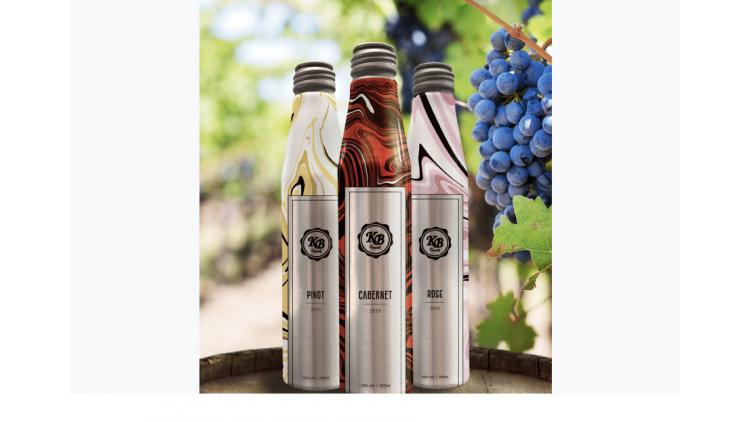
After 9-10 months in R&D and with an invaluable assist from Montebello Packaging, which supplies the cap (see New tech reshapes aluminum beverage bottles, published July 2017), KinsBrae earned a patent pending on the design.
Versus glass, the unbreakable aluminum bottles are easy to handle and inexpensive to ship. KinsBrae offers custom sleeving for maximum shelf appeal for user occasions where glass bottles cannot go such as poolside or on golf courses.
“The reception has been fantastic,” Bonnick tells Packaging Digest. “We have several customers going into market.”
The first to market is Magnotta, a winery with 13 locations in Ontario, Canada, which introduced the bottle just last week.
The downsized format has big ambitions—it aims to compete directly with the industry standard 750mL. How? Bonnick points out that not only are three 250mL bottles more convenient for many consumers than one 750mL bottle, a threesome ships 25% lighter.
Another advantage is that wineries are interested in dropping the price point; a high-end wine in 750mL can be dropped in price by two-thirds to a more palatable $15-20 price point in the 250mL size, he explains.
Based on the enthusiastic reception, Bonnick looks to bring a 500mL version to market in the coming months.
While it primarily does business in Canada, KinsBrae Packaging is open to discuss the new format with US brands.
Free AI-driven AR for all U.S. wine labels.
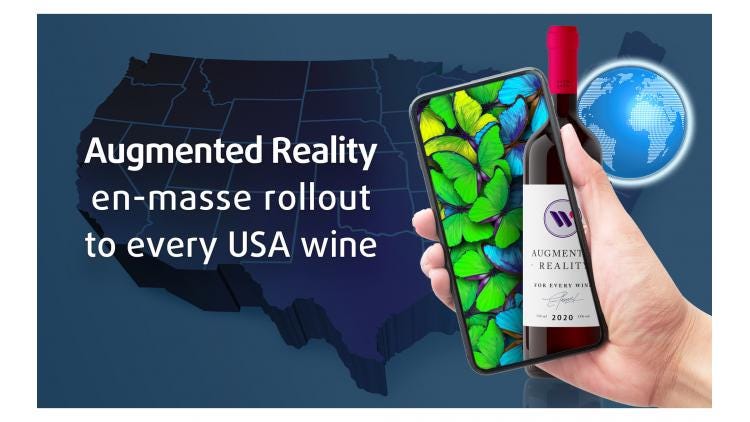
Augmented reality (AR) is moving rapidly into the mainstream, with a tech start up announcing in February wide rollout of its wine-designed smartphone AR App.
How wide? The proactively bodacious plan from Winerytale expects to enable consumer engagement for the entire American wine industry. Content for more than 10,000 American wine brands is being gathered in readiness for a July 2020 launch that follows successful field trials in 2019.
“The App gives thousands of American wines the chance to use the tech as a proven sales pathway to the elusive millennial market,” says digital marketing expert Dave Chaffey, who heads the Winerytale team. “We've built the concept around the next generation of wine lovers discovering the authentic story behind the wine, while weaving in elements of social media and some unique user interaction.
"The concept is ideal for wineries looking to connect with millennials—the one market that has eluded the wine industry to date."
The App is built for scale and designed to work on any wine label, using artificial intelligence to recognize labels and AR to showcase the wine's backstory, with content streamed from the cloud.
Remarkably, wineries don't have to do anything and there's no cost, with a freemium model underpinning the aggressive rollout. The American expansion is hot on the heels of the rollout to all Australian wines, set for completion in the next two months.
This rPET bottle is a flat-out ecommerce breakthrough.

Ecommerce has proven such a must-have, high-growth market that one brand designed a breakthrough bottle optimized for the unique demands of this retail channel.
In fact, there’s never been a wine bottle quite like Flat Wines from Delivering Happiness Ltd., UK, trading as Garçon Wines, which started from scratch and threw out the assumptions that wine bottles must be round and made from glass.
Flat wine’s 750-mL bottle is so compact that it fits through residential mail slots and, in being on-trend and light as can be, is made from 100% food-grade, post-consumer recycled PET.
It claims to be remarkably more cost-effective, eco-friendly, and consumer pleasing for delivery, retailing, and the supply chain where each bottle saves more than 500g of carbon dioxide.
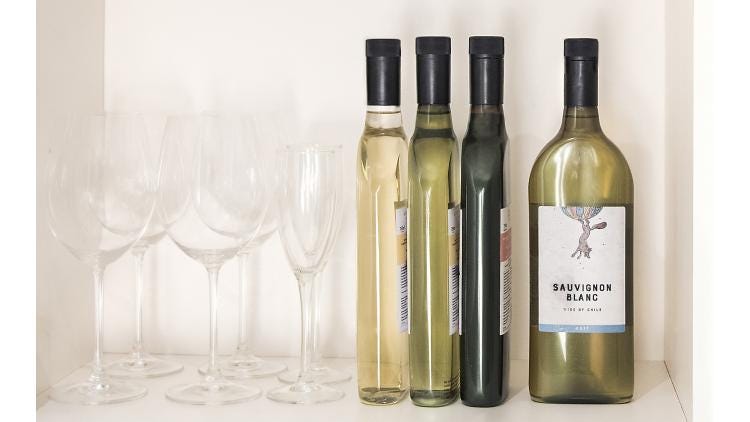
It’s hard to argue any of those points. Key facts (and vs 750mL glass bottles) are that they’re…
87% lighter;
100% recyclable;
40% spatially smaller, which means that more than twice the amount of bottles fit on a pallet;
Stackable like books and save space at retail, at homes and everywhere;
Slightly taller than an average bottle, which distinguishes them on the dining table and enables greater merchandising presence in a retail setting, increasing visibility and driving sales.
Flat Wines were named a Diamond Award finalist in the 2019 Dow (DuPont) Awards.
Also, Amcor announced in February a collaboration with Garçon Wines to make the company's signature flat wine bottles available to the U.S. market. The collaboration will include producing the flat wine bottles with post-consumer recycled (PCR) PET plastic.
Images: Garçon Wines
A first in connected wine bottles.

With rare exception, near-field communication (NFC) is a consumer-engaging interface applied to bottles as a label or as part of a label.
Last August, Californian wine brand Böen part of Copper Cane Wines & Provisions by Joseph Wagner, partnered with Guala Closures and SharpEnd to launch first NFC-enabled wine bottles in the United States. The enabling tech for the platform is e-WAK, Guala Closures’ NFC-integrated aluminum closure for wine.
In a first for Europe and the second application in the world, the innovative aluminum screw-cap closures with NFC technology are being used by the Vigneti Massa wine estate in Italy to provide exclusive digital contents to consumers including information on the wine growing, vineyards, vine, tasting notes and expert reviews.
There’s also another key function: Product security. The NFC system serves as an anti-counterfeiting certification measure using a blockchain platform that provides a unique identification code for each bottle. This allows Vigneti Massa to protect sensitive and monitor data in real time.
A highly appealing label.
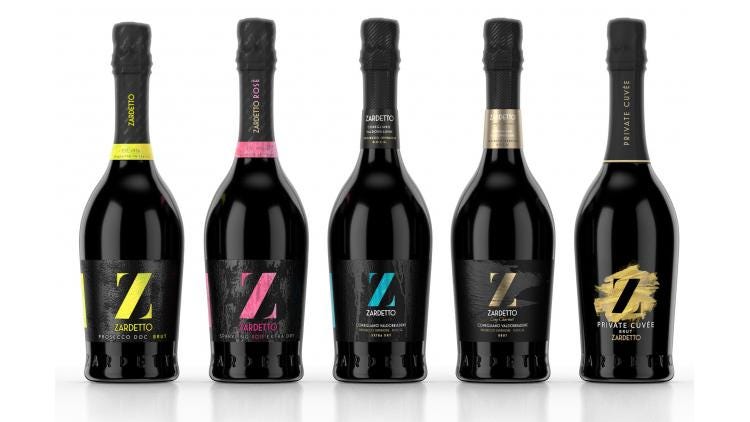
Peel-back labels are usually associated with pharmaceutical and medical product packaging, but Zardetto, a major producer of Prosecco, has put a creative spin on the concept. The brand comes via LLS (Leonardo LoCascio Selections), a division of Winebow Imports dedicated to premium Italian wines.
When unpeeled, the new dual-layered labels reveal an inside layer of colorful artwork that’s unique to each wine. Surprise phrases on the inside of the peel-away label on the Prosecco DOC Brut and Sparkling Rosé Extra Dry share contemporary Italian expressions, translated into English, that speak to the celebratory lifestyle embodied by Zardetto Prosecco. The back of the labels themselves are black and contain one of several Italian surprise phrases, followed by an English translation:
A che ora ci becchiamo per l’aperitivo?
What time shall we meet for aperitif?
Questa festa spacca!
This party rocks!
Ciao bella! Usciamo stasera?
Hi sweetheart! Will you go out with me tonight?
Ciao raga, come va?
Hey guys, how’re you doing?
Quanto sei diva!
You are a real superstar!
The label artwork was created by award-winning Italian design agency Robilant Associat.
Additionally, a new proprietary bottle shape was designed for the range, carrying the Zardetto name embossed in glass.
"We are thrilled with the look and feel of the new packaging, particularly the creativity of the labels, which are really striking and unlike anything we've seen in the category," says Ted Campbell, Senior Vice President and General Manager of LLS. "Our ultimate goal is for even more consumers to enjoy and appreciate the quality that Zardetto has always represented."
Label these as sustainably impactful.
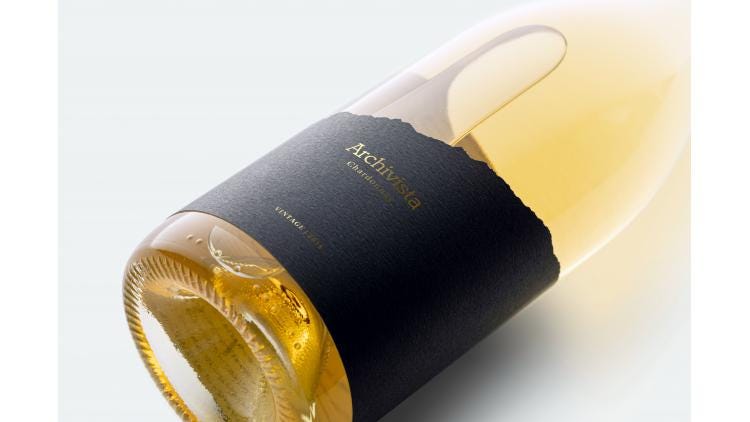
Along with other products, wine packaging has also been infused with a notable amount of sustainable improvements. Apart from the primary package, the label is likely the second most noticeable aspect that also affects the overall impact of the design.
Avery Dennison Label and Packaging Materials introduced in late January the addition of six new facestocks to its Wine & Spirits Portfolio that not only deliver a high-end, shelf-appeal-enhancing experience via a premium look, finish and feel, they are also manufactured from sustainable materials that involve several atypical sources including cotton, hemp and citrus.
“Labeling technology must work harder than ever for the winemaker and retailer, and these new Avery Dennison collections go beyond helping a bottle stand out on the shelf,” says Vanita Marzette, senior product manager - Wine and Spirits. “Whether it’s telling a wine’s sustainability story, employing technology to directly engage with consumers, or ensuring a wine’s validity, labels can serve a variety of needs for the winemaker, retailer and end user.”
Examples include:
70# Fasson 25% Black Cotton Feel Wet-Strength a 70-pound black facestock with a tactile feel made with 25% cotton and 30% post-consumer waste (shown);
70# Fasson 25% Cotton Feel Wet-Strength, a 70-pound white cotton facestock that delivers a soft cotton felt finish made with 25% cotton and 30% post-consumer waste;
Fasson 25% Hemp, a premium facestock made with 25% hemp and 75% post-consumer waste to meet demand for label materials containing both organic materials and recycled content.
The company also has available interactive near-field communication (NFC) and augmented reality (AR) labels.
New shape and textures in glass.
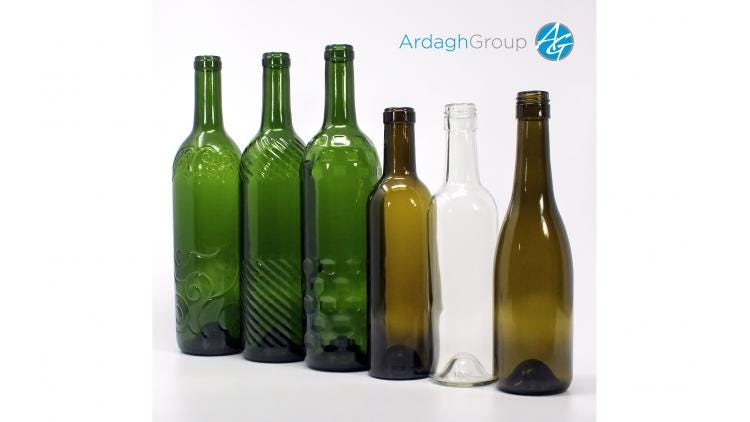
Tried and true, glass packaging continues to hold the largest market share in the wine category.
“Diversity of color, shape, printing, and finishing options are some of the factors fueling product demand in the wine industry,” reports Mordor Intelligence. “The other major advantage of glass packaging is that it can be molded into various shapes and sizes, facilitating its use across different industry verticals.”
Which sets up news about a new line of glass bottles from Ardagh Group, Glass – North America. The largest domestic manufacturer of glass bottles for the U.S. wine market, Ardagh announced in late January six new sophisticated new glass wine bottle designs. These include three new textures, Remo, Cuadras and Vina designs, that use unique shapes and textures to deliver an emotional connection to the consumer through a more interactive experience that engages their senses.
An expansion of Ardagh’s extensive portfolio, the new designs include three new texture options, one 375mL Claret style bottle with a Stelvin finish, one 375-mL Clarett-style bottle with a cork finish and one 375 mL Burgundy-style bottle with a Stelvin finish.
For wineries looking for single-serve options, Ardagh’s three new 375mL bottles allow consumers to mix-and-match varietals and sample products without committing to a multiserve format.
“Innovative bottle designs and single-serve packaging formats provide wineries with opportunities for differentiation in today’s market,” said John T Shaddox, Chief Commercial Officer for Ardagh’s North American Glass business unit. “Ardagh’s new glass wine bottle options leverage a modern, premium look and feel that respond to consumer interest.”
For more information is on the new bottles, click here.
An out-of-this-world wine shipment.
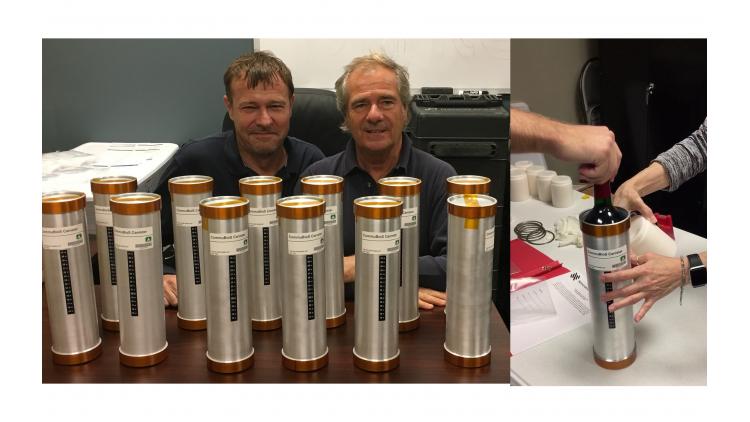
12 bottles of red wine are secured in protective containers for the voyage to the International Space Station. Photos: Olivier Bailly-Maitre
Last and certainly not least, on November 2, 2019, at 9:59 a.m. ET, Space Cargo Unlimited (SCU), a one-of-a-kind European “New Space” start-up, launched from Cape Canaveral, FL, bottles of red wine to the International Space Station (ISS). Done in partnership with Thales Alenia Space and Nanoracks, the bottles are to be aged in space for 12 months before returning to Earth. Packaging Digest was informed by SCU’s Maryse Camelan that the wine was successfully onboard the ISS on November 4.
The delivery represents a first for glass packaging: Quartz reported that “a dozen bottles of the finest wine…are believed to be the first glass bottles flown to the orbiting laboratory.”
The 12 bottles of red wine will remain in the ISS for a year and then will be compared with their earth-bound equivalent.
According to Camelan, this was the first of a six-step Mission WISE (Vitis Vinum in Spatium Experimentia), the first comprehensive, privately-led, applied-research program on the ISS that seeks to develop innovative solutions for the future of food and agriculture on Earth. Step 2 was ALPHA, a payload that blasted off December 11 from Van Horn, TX, with vine calluses for research aboard Blue Origin’s New Shepard space vehicle. Step 3 CANES set for March 6 liftoff involves 320 vine canes (Merlot and Cabernet Sauvignon) that will remain six months in the ISS before returning to earth. The three remaining experiments will be spaced throughout 2021.
Quartz went on to report that the bottles are part of an most unusual funding plan: “The research will be paid for in part by a luxury goods partnership that will deliver a customized chest full of objects flown to space to ultra-wealthy sponsors, called patrons, who back the project. The highlight of that chest will be a bottle of the wine. The idea is that this would be an artistic collector’s item unlike any other.”
I’ll say it is. And we end our wine roundup on a very high note indeed.
You May Also Like


